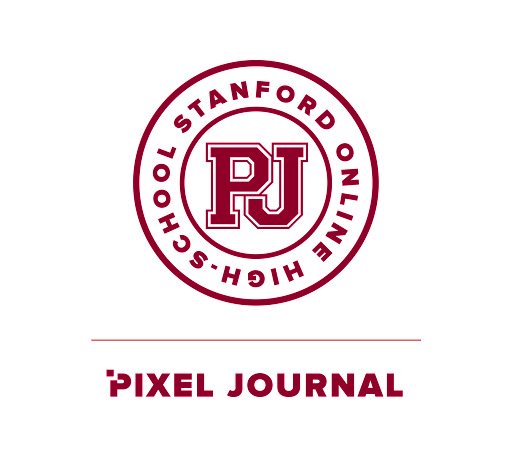History of The Chrysalis
The Chrysalis, formerly called the OHS Literary Journal, was founded by Dr. Kerr in 2006 (which is when Stanford Online High School was created) to provide students with an opportunity to showcase their creative work. The journal only took on the name The Chrysalis in 2020 when the idea was pitched by Emma Driespiel (‘21), then-lead editor. A part of the Literature Club – which is sponsored by Dr. Kerr and led by Natalie Wang (‘22), Pallas Lemarchand (‘23), Sophie Mansoor (‘22), Dhru Goud (‘23), and Alina Zhong (‘23) – The Chrysalis has now become larger and more ambitious. Not only has the journal grown in size, from around 11 contributors in 2017-2018 to 60+ contributors and editors in the Fall 2021 issue, “Nocturne,” but also in scope, having expanded to include academic work in recent years.
New editors-in-chief Elane and Ari describe the role that the journal has played throughout its publication. “As editors-in-chief of The Chrysalis,” says Elane, “Ari and I are incredibly excited and honored to be continuing the tradition of uplifting the student body’s creative work, ranging from poetry to photography, portrait drawing to playwriting, short fiction to academic essays. Through The Chrysalis, we hope to carve out a space for the celebration of student voices.” Ari adds, “It’s our wish for The Chrysalis to bring positive transformation, like its namesake, to everyone in the OHS community. We’re thankful to all of our past, current, and future contributors – they are the reason this wonderful journal exists and will continue to exist for a long time."
For the upcoming Spring 2022 edition, The Chrysalis will be led by new editors-in-chief Elane Kim (‘23) and Ari Yao (‘22), who note how the journal has achieved recognition outside of OHS in the REALM contest – acronym for Recognizing Excellence in Art and Literary Magazines – a program sponsored by the National Council of Teachers of English which is “open to all middle and secondary schools, as well as colleges and universities, throughout the United States, Canada, Virgin Islands, and American schools abroad.” Under the leadership of Ikera “Kee” Olandesca (‘21) and Emma Driespel, “Nectar for Withering Flowers” (Spring 2020) won the rank of “Excellent” in the REALM 2020 awards. The following year, “Chimera” (Fall 2020/Spring 2021), led by editors-in-chief Natalie Wang and Sophie Mansoor, won the REALM rank of “Superior,” which means that the journal had outstanding and error-free writing, at least 5 distinct genres, and a well-designed and student-led format. The name “Chimera” means “illusion,” and in this sense, the edition represents “the contrasts between individuals that illustrate the complexity of our actions, thoughts, and emotions.” Kee, then-managing editor and student advisor, emphasized that The Chrysalis is non-selective, which makes the journal a great opportunity for aspiring artists and writers to showcase their work. She noted that students are often rejected from well-known literary or art journals, which might discourage them. However, because The Chrysalis publishes all kinds of work, it is a wonderful way to encourage artists and writers to keep on creating.
Echoing both Elane’s and Ari’s sentiments, The Chrysalis has evolved to become an integral part of life at OHS. Undoubtedly, it continues to serve as an inspiring stage, spotlighting the artistry, innovation, and collaboration of OHS’ unique individuals. As Dr. Kerr observes, The Chrysalis has had “many lives,” but it now “has come into its own place to live.”
If you are interested in submitting your work to The Chrysalis for its fall 2022 edition, please do so at https://linktr.ee/ohschrysalis. The Chrysalis editorial board can’t wait to see all of your submissions! Any questions can be directed to ohsliteratureclub@gmail.com.
Works Cited:
https://ncte-org.stanford.idm.oclc.org/awards/program-to-recognize-in-student-literary-magazines/
